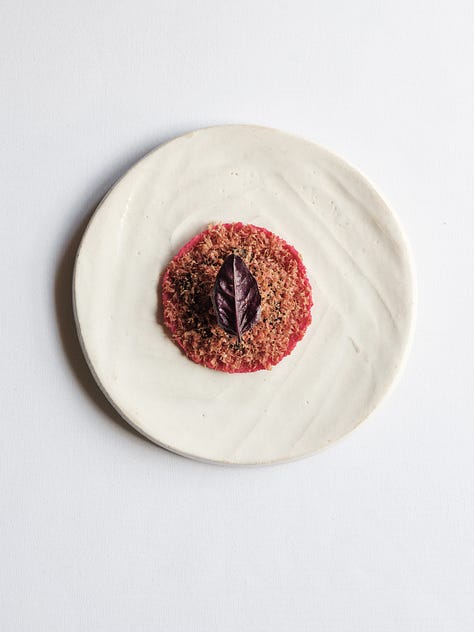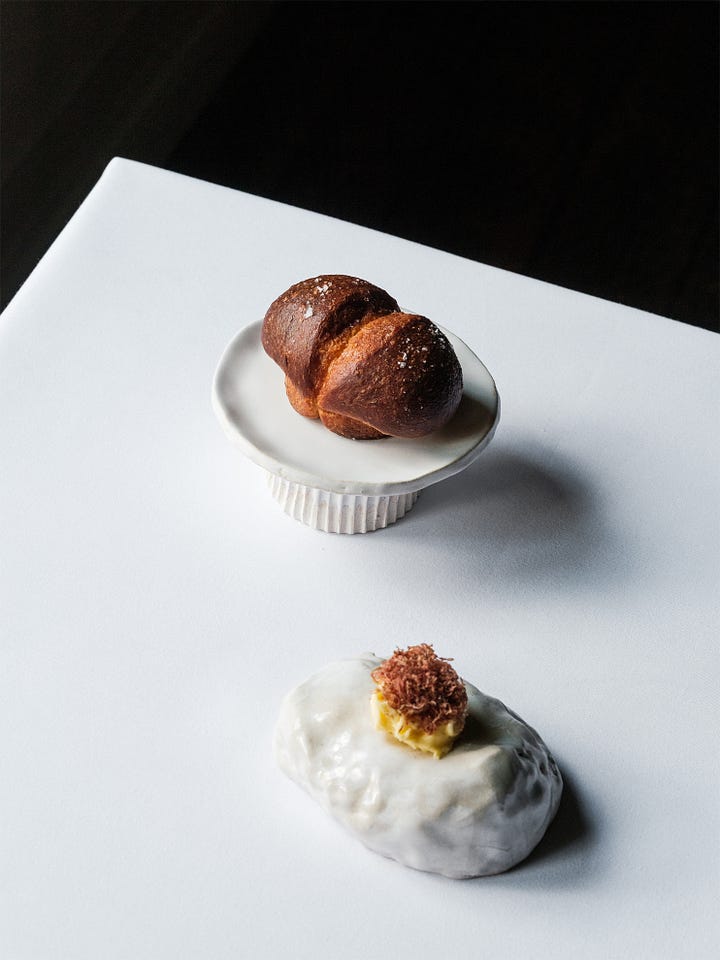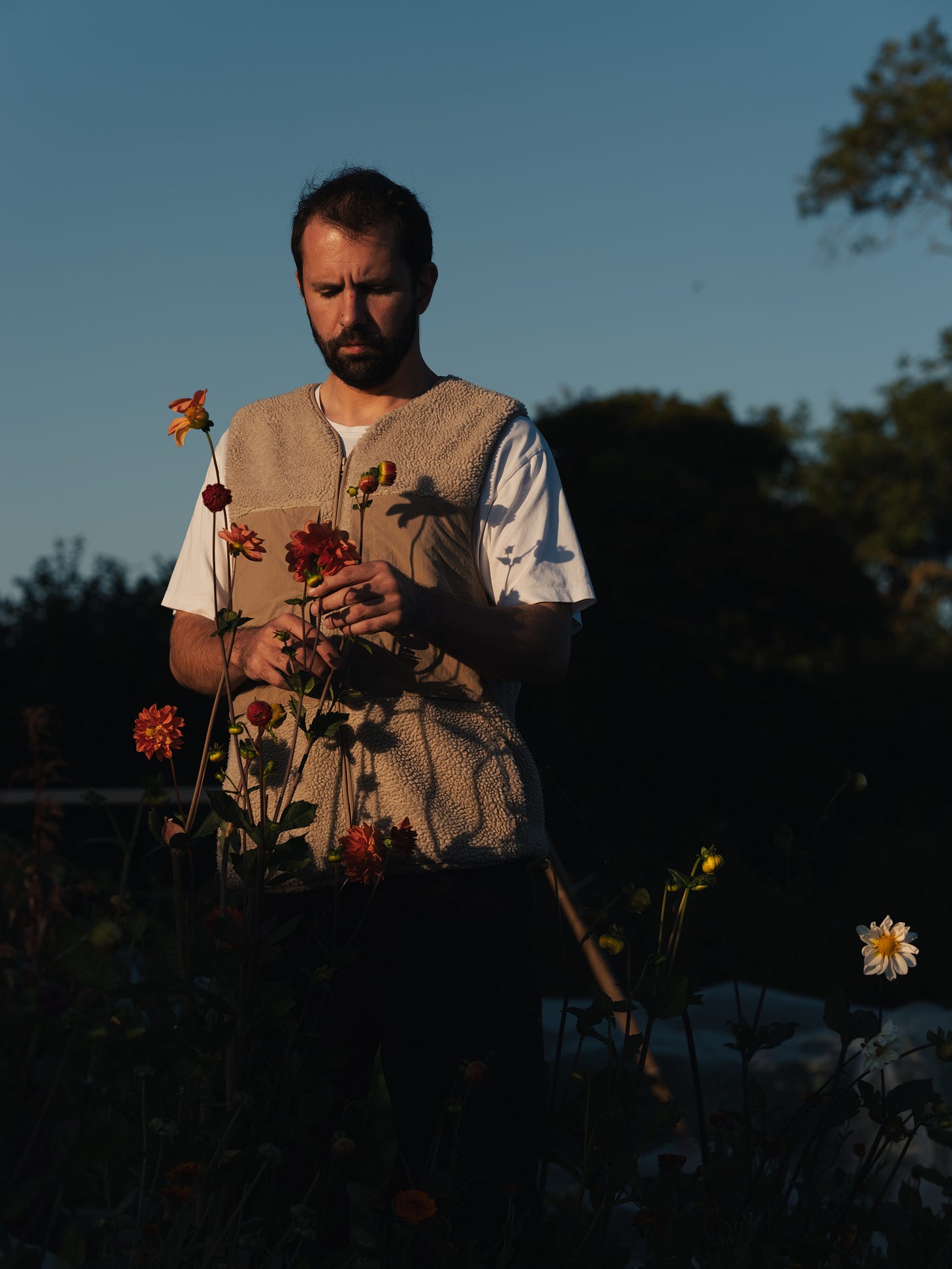The tastemaker: Osip’s Merlin Labron-Johson
The Michelin-starred chef talks brand building, simplicity and why he’s not trying to create a “luxury” experience, as he settles into Osip 2.0
Welcome to TOMORROW WILL ARRIVE, a platform for cultural critique and future thinking; offering perspectives on luxury, brand strategy, identity and design. Created by BIRCH, we are a London-based creative studio, founded in 2009. You can reach us here, or join our Subscriber chat here.
Eating at Osip, Merlin Labron-Johnson’s Michelin-starred, farm-to-table restaurant in Somerset, is a unique experience.
It’s also a uniquely appealing experience, thanks to the compelling brand identity and storytelling that Merlin and his team have brought to bear. While there’s great creativity in the cookery at Osip, there’s also creativity in the way that Osip presents itself – and in the thoughtful dining experience that’s been steadily refined ever since the doors of Osip 1.0 opened in 2019.
Back then, Osip occupied a compact space inside boutique hotel Number One Bruton. Today, Osip 2.0 is a sophisticated, 38-cover restaurant in a carefully transformed 18th century pub. The brand itself reflects this, striking a pleasing balance between earthiness and elegance. It also communicates Merlin’s commitment to seasonality and echoes the food itself, which is at once meticulously layered and daringly composed.
We sat down with Merlin to explore what he’s learned in shaping such a distinctive hospitality brand. Here’s what he told us.
There’s a critical difference between having a point to prove and being ambitious. When I was younger, I felt that I had a point to prove. I don’t feel that now, but I’m more ambitious than I’ve ever been. The trajectory and the goals that I’m setting for myself are so far removed from anything that we thought was even possible a few years ago. Perhaps before I wanted to prove things to other people, and now I want to prove things to myself.
With the old Osip, we were a small, one-star restaurant on the ground floor of a hotel and we achieved national recognition. The ambition with the new Osip is to create a restaurant that people will travel from all over the world to visit – which is recognised globally.
We’ve done a lot of work to create a brand that has a really clear set of ideas and philosophies that people can respond to. Osip is different. It has its own voice and it’s own identity. To me, building a compelling brand around our restaurant dining experience is really important. I’ve taken huge pleasure in crafting Osip’s brand so that it feels authentic to us and what we do, and sets us apart from other restaurants.
All elements of the brand have been thoughtfully considered. From the colour palette, to how we use the luxury of the open space that surrounds us. One thing I particularly enjoyed working on was the typography. I love the simplicity of using good-quality type and text, so we created a font for Osip that feels reflective of (and authentic to) that.
Authenticity is key to success. There’s so much going on in the culinary world – at every level – but if it doesn’t feel authentic, then it just doesn’t work for me. When it does, it can be as simple as grilled fish on the beach, or suckling pig in the mountains. The food has to be good, but you need to add a really clear sense of identity and place – and that’s becoming rarer and rarer. Especially in London.
A lot of restaurants that diners might align us with are cooking to create ‘luxury’, but I don’t like that word. At Osip, we don’t want to be obvious. So many Michelin starred restaurants have lobster and caviar on every course now – it’s just boring. We serve beetroots and radishes. Sometimes, the ingredients at Osip are a luxury not because they’re luxury, but because they feel right in the context of the season.
A lot of what inspires me is thinking about detail. Not about food, but about all the things that sit around the food. That’s when I feel more comfortable thinking about things being ‘luxurious’. Often, I talk about things being luxurious in juxtaposition to something being a little more brutal or rough. When you balance brutality and minimalism with refinement, that’s a fun area to play with.
I like to use materials that are tactile, but not in a showy way. Diners don’t necessarily know that some of the pieces we use cost 10 times more than other, showier, pieces I could have opted for. But, it just feels better and feels right – without showing off.





There was a course on our spring menu, pumpkin agnolotti with a sauce made from whey and smoked butter. I loved the idea that there would be a point in the meal where all the adornments would be removed from the table and you’d be left with white space. Then, you get the cutlery – a wooden spoon – before the dish arrives and have a moment to consider it. We don’t tell people about it, but the spoons were cut from a wild cherry tree on a nearby estate. The craftsman individually whittles each piece. At the end of every week we spend some time sanding and oiling each spoon to make sure they retain their patina and age nicely. There’s a lot that goes into something so simple, like this.
Being good at what you do requires empathy. I’m a naturally empathetic person and I take time to listen to my team and the people I work with. That’s really important. When I was coming up, not one really cared about what you did and how you felt, or what your ambitions were. No one ever stopped to ask if you were okay. Trying to tune in to how people are feeling and how people want to be treated is crucial.
I find structure and routine invaluable. I go to bed and wake up at the same time. I exercise. I journal and take lots of notes at the end of each day. I have a daily and weekly plan, whereby I write a clear list of all the things I want to achieve in my week, but also do this on a daily basis. I wake up pretty early and spend time sorting through my list and visualising how my day and week might take shape.
There’s a really strong link for me between art and design, and food. Art and design often inspire ideas for cooking or dishes. They also help me to think about what we do in terms of ‘composition’. The simpler a dish is or the more it stands out as a clear idea, the more it feels good. We’ve not talked about my other restaurant, The Old Pharmacy in Bruton, but internally we talk about how Osip is elevated and The Old Pharmacy is more democratic. The cooking at The Old Pharmacy can be really quite simple, but it’s a different kind of composition.
Simplicity and form are equally important. Because the simpler good food is, the more powerful it can be.
Explore more at merlinlabronjohnson.com, osiprestaurant.com, theoldpharmacybruton.com






